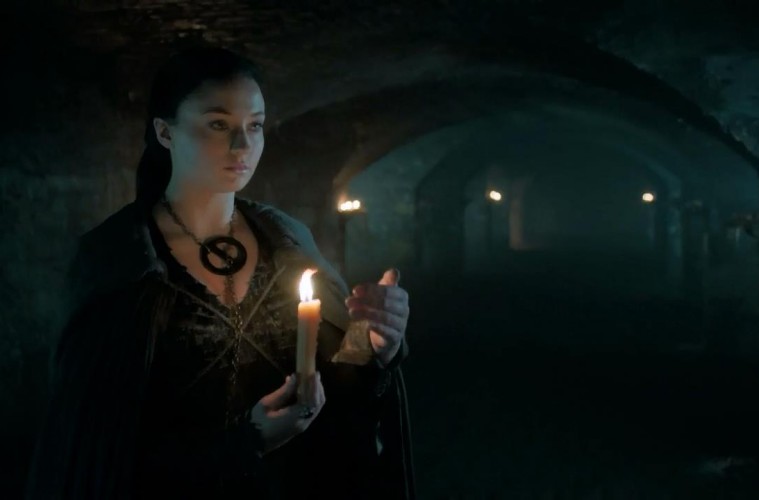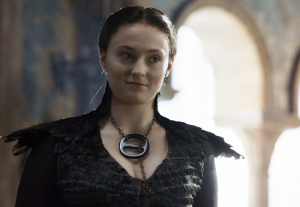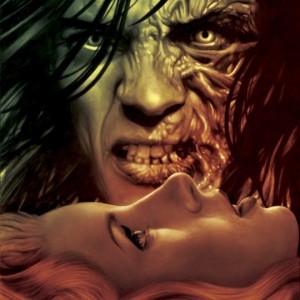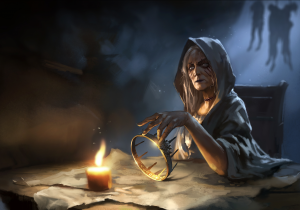“I dreamt of a maid at a feast, with purple serpents in her hair, venom dripping from their fangs. And later I dreamt that maid again, slaying a savage giant in a castle built of snow.”
—A Song Of Ice and Fire, A Storm of Swords
Earlier this month, I wrote an article called “The Case for Complex Female Characters” that urged the media to include narratives of diverse groups of women in their stories. One of the examples I praised was Game of Thrones. This series features many interesting female characters who have their own character arcs and are not treated as sexual objects by the narrative, which casts a critical eye on patriarchal society.
While I will still defend George R.R. Martin’s book series—despite its faults—the television adaptation has reached a point where its treatment of most of the characters and story is so disappointing that I can no longer support it. This past week’s episode is a great example of the increasing apathy the writers show towards female characters especially. Gilly, after nearly being raped (as if there haven’t been enough non-canon sexual assaults in this show already?), shrugs off the sexual assault as ho-hum and “rewards” Sam one scene later. “Strong female character” Tyene Sand strips in front of Bronn for no reason other than to tease him (and meet HBO’s obligatory booby quota) as her half-sisters roll their eyes, probably thinking: Are we just here to throw poisonous whips around sexily? Really? And Sansa Stark, who overcame abuse to become a player in the game of thrones, is humiliated, degraded, and sexually assaulted in a fashion eerily similar to what she was subjected to under Joffrey (except worse).
Although all of these departures from the books upset me, it is the way Sansa’s character arc has been butchered on the show that frustrates me the most. But I should’ve seen it coming, because the show has erased and downplayed some of Sansa’s most powerful moments in the books for a while now.
It’s time that Sansa Stark got the justice she deserved.
But why Sansa? You ask. She’s okay and all, but she’s so weak. Especially compared to Arya/Brienne/Daenerys. She should’ve just killed Joffrey/Ramsay and gone out with honor like good ol’ Ned.
Sit the fuck down and let me explain you a thing about Sansa Stark.
In Game of Thrones, we are introduced to a cheerful 11-year-old named Sansa Stark (Yes, 11…two years younger than show Sansa and apparently old enough to be betrothed). She believes that all knights are valiant, all maidens fair, and that the handsome good guy will always beat the ugly monster. You know, like 11-year-olds raised on songs that sound like they could be in Disney movies would think. So when she finds out she’s to marry Prince Joffrey, she literally can’t imagine that her life will be anything but perfect. Naïve? Obviously—and it won Sansa many haters during the first book and season of the show. I’ll admit I was no fan of Sansa’s delusions about riding into the sunset with Joffrey and bearing his golden-haired babies myself when I started reading, but there’s a little thing called character development.
While the show would have you believe that she went from being a “stupid little girl” to a dark pessimist with a sultry voice overnight, the thing I find so fascinating about Sansa’s character in the books is that even though she becomes roughly critical of the world she lives in and uses her charm to manipulate others, she is still pure of heart. No matter how bad her situation becomes, she displays pragmatism rather than pessimism; she puts on a smile and plays along instead of dying honorably, because she believes she is the last Stark of Winterfell, and her survival means saving her house. She doesn’t become fixated on revenge like her fan-favorite sister, nor does she take up fighting. Sansa has everything she needs to survive, and that is her strong, gentle heart—not unlike Daenerys’—that inspires others to change for the better.
In an amusing twist of fate, the person most influenced by this little girl who loves lemon cakes is none other than Westeros’ favorite sardonic killer: Sandor Clegane, aka the Hound. From early on in the book series, Sansa develops some sort of odd fondness for Sandor after he reveals to her how his brother burned half his face off—something he has never told anyone before. The scary, ugly warrior she once feared becomes more like a grumpy, irritable puppy dog—and one of the only people she can open herself up to after her father is killed. He helps Sansa realize the only way she’s going to avoid her father’s fate is if she learns to become a better liar, and she in turn plants a nagging idea in his head that maybe—just maybe—he has the potential to become one of those “true knights” she rambles on about.
What? You don’t remember any of this? That’s because most of it didn’t happen in the show. Littlefinger told Sansa the story of the Hound while she cowered in fear. Sansa spent most of season two shaken and demoralized while the Hound creepily lurked nearby and ratted her out to Cersei (to be fair, he creepily lurked around her in the books too, but Sansa was mostly cool with it. It’s a strange, fascinating relationship). Sure, occasionally she roasted Joffrey with a zinging one-liner, but the Sansa of the books didn’t just subtly diss Joffrey as much as she could without being beheaded; she actively tried to escape King’s Landing with the help of Dontos Hollard, the drunk she saved from Joffrey’s wrath (a subplot that doesn’t occur in the show until season four). In the second book, the majority of Sansa’s scenes show her displaying agency by making escape plans and trying to convince the Hound that he’s a cynical grump. In the second season of the show, the majority of Sansa’s scenes show her as a victim of abuse.
But Sansa’s most powerful moment—arguably one of the most powerful moments in the entire series—is the scene between her and the Hound during the battle of Blackwater. The show version of the Hound was rather tame when he randomly showed up in Sansa’s room in a half-assed attempt to convince her to leave with him because he’d never hurt her (hence why many show-only viewers scratched their heads as to why she didn’t go with him). In the books, he was drunker, scarier, and desperate for her to run off with him like he was one of those knights in the songs she loved. Sansa, obviously terrified by his drunken behavior, refused him. So he held a knife to her throat and demanded a song from her. Remember, Sansa was at the ripe old age of 12 in the books when this happened.
Then Sansa did something that you could say is really stupid or really brave: she sang a song, a prayer, begging the Mother to save him. The Hound, realizing what a piece of shit he had been, started sobbing and left. It was one of the most powerful, character-defining moments for Sansa, and the show diminished it. Instead, her most dramatic moment was a scene of horrific abuse at the hands of a psychopath who she had no power in influencing. Sansa getting Westeros’ most bloodthirsty killer to realize he needs to go rethink his poor ass choices is far more interesting—and empowering— than her being married off to abusive Joffrey 2.0 for shock value.
But the little things from the books that make Sansa Sansa should also not be glossed over. Like many teenage girls, Sansa enjoys making up stories and gossiping about guys with her friends. Sansa’s girlfriends, Jeyne Poole and Myranda Royce, don’t appear in the show, but Shae serves as a more than satisfactory replacement during seasons two and three. For a while, it was nice to see Sansa have someone she could trust on the show…or so she thought. Despite claiming she would “kill” for Sansa, Shae betrayed her out of jealousy during Tyrion’s trial. And while we’re on the subject of “clingy jealous girls,” the Myranda in the show adaptation (Ramsay’s lover) is anything but a bosom buddy to Sansa.

But show Margaery appreciates Sansa for the fine woman she is. Sansa’s actress Sophie Turner ships it.
Sansa’s moments of quiet defiance against men who aren’t Joffrey are also omitted. She refuses to kneel to Tyrion during their forced wedding (I will smack anyone who says, “But he’s a good guy so she should be grateful!” She was barely 13 and a prisoner to his family). When she escapes to the icy, dark Eyrie with Littlefinger, he offers her a pomegranate and she refuses (proof that GRRM reads his Greek mythology. If the reference is lost to you, see “Six Seeds Under” for details), foreshadowing how she’s not going to resort to Littlefinger’s shady antics and become his “Queen”: she’ll do things her way. By this point, she’s sick of being married off. She’s sick of being a pawn. Littlefinger is just a means to an end for her to regain the North…not a means to an end for Littlefinger to possess the North through her. Book Sansa, as shown in a preview chapter from the sixth book in the series, is perfectly happy having fun with her friends and toying with annoying suitors like Harry the Heir…hundreds of miles away from Ramsay Bolton, whom she has never met and hopefully will never meet, thank you very much.
But why have “a strong female character” go through such boring trials like getting powerful men to rethink their life choices, having female friends she can actually trust, and showing potential suitors who’s boss in a fucked up, patriarchal world? The better dramatic choice is clearly further sexual abuse to a character who has already been abused greatly. And since no one wants to watch a naïve little girl become an empowered woman in her own right without pointless violence happening along the way, let’s give Sansa the Lady Stoneheart (aka zombie Catelyn) arc while we’re at it. Sansa’s path towards empowerment is NOT about being all sassy and dark and shit.
Add this to my plea to the media: Putting a weapon in a woman’s hands does not make her story more interesting. Making a woman a sex object does not make her story more interesting. Abusing a woman does not make her story more interesting. I’m not saying these things can never contribute to character development, but when these are the only things that you show happening to a female character, that’s lazy and sexist. It’s not good storytelling.
Sandor Clegane thinks Sansa is worth fighting for. Brienne of Tarth thinks Sansa is worth fighting for. You should too.
Header image via HBO. Image of Sansa in a black dress via feministfiction. Calendar Art of Sansa and the Hound by John Picacio, featured on Geekextreme. Image of Sansa and Margaery, Calendar Art of Lady Stoneheart via Fanpop (1) (2).





